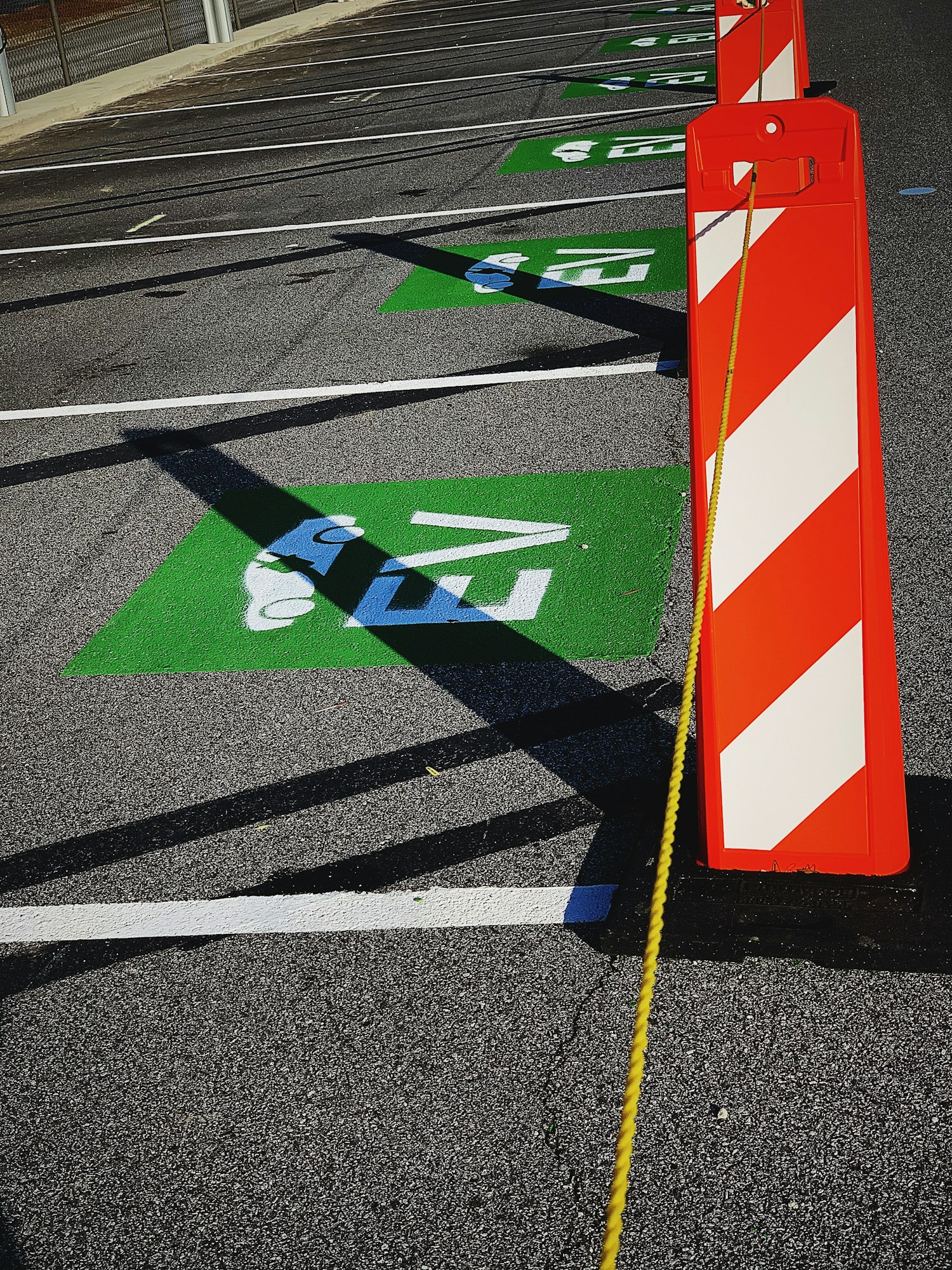From the bustling cities to the serene countryside, the UK has a diverse landscape that presents a variety of driving conditions. One significant challenge, especially in the hilly regions, is the downhill driving. As you venture through these steep roads, you might have noticed that the weight of the vehicle has a profound influence on the braking efficiency. You might have pondered, why does this happen? What is the physics behind it? In this article, we will delve into the world of automotive mechanics and physics to explore how the load capacity of a car impacts its braking efficiency on downhill roads.
Understanding the Basics: Braking, Energy and Weight
Before we delve into the heart of the matter, let’s take a moment to understand the basic principles involved in braking a vehicle. The act of braking is a prime example of physics in action, specifically Newton’s laws of motion. When a vehicle is in motion, it possesses kinetic energy. When the brakes are applied, this kinetic energy is converted into thermal energy by the braking system, thereby slowing down the vehicle.
Also to read : What is the process for safely installing a tow bar on a mid-sized family car?
The weight of a vehicle plays a pivotal role in this energy conversion. The heavier the vehicle, the greater is the kinetic energy that needs to be converted to bring the vehicle to a stop. In short, a heavier vehicle will need more braking power to stop than a lighter one under similar conditions.
The Role of Gravity in Downhill Braking
Driving downhill creates an additional layer of complexity to the braking process. Here, the force of gravity comes into play. When you are driving downhill, gravity pulls the vehicle towards the bottom, increasing its speed. This means that the vehicle’s kinetic energy, and subsequently the energy required to stop it, increases.
In parallel : How can you ensure that your vehicle’s safety systems are compatible with child safety seats?
In this scenario, the weight of the vehicle significantly impacts the braking efficiency. A heavier vehicle will gather more speed while going downhill due to the greater gravitational pull, requiring more braking power to slow it down or stop it.
The Impact of Load Capacity on Braking Efficiency
Load capacity, essentially the maximum weight a vehicle can safely carry, directly influences the total weight of the car on the road. When a vehicle is loaded up to its maximum capacity, its weight increases. As we’ve established, a heavier vehicle needs more energy to be stopped, meaning that a vehicle with a higher load will require more braking power.
It’s also important to note that overloading a vehicle can severely impair its braking efficiency. When a vehicle carries a load beyond its rated capacity, it may require more stopping distance and time, which can be risky, especially on downhill roads.
Braking Efficiency, Fuel Efficiency and Engine Power
When we talk about braking efficiency, we should also mention its impact on fuel efficiency and engine power. In general, a heavier vehicle consumes more fuel due to the extra energy required to move it. This fuel consumption increases even more when the vehicle is loaded to its full capacity.
The engine power ties into this picture as well. The engine needs to work harder to propel a heavier car, especially uphill, leading to more fuel consumption. When going downhill, the vehicle relies more on the brakes to control the speed, putting strain on the braking system. As such, a higher load capacity can negatively impact fuel efficiency and engine power, alongside braking efficiency.
The Influence of Traffic and Road Conditions
Finally, let’s consider the impact of traffic and road conditions on braking efficiency. In congested traffic, frequent braking is necessary, which can add strain to the brakes, especially if the vehicle is heavily loaded. Similarly, poor road conditions like wet or icy surfaces can increase the stopping distance, particularly for heavier vehicles.
Downhill roads also pose a challenge to the braking system of heavily loaded vehicles. The steepness of the slope and the length of the downhill stretch can intensify the strain on the brakes, making it harder for them to dissipate the heat generated from the braking process. This could potentially lead to brake fade, causing a decrease in braking efficiency.
In conclusion, it’s evident that the load capacity of a vehicle has a significant impact on its braking efficiency, particularly on downhill roads. Understanding the physics behind this can help you make informed decisions about loading your vehicle and driving safely in different conditions.
The Role of Anti-Lock Braking System (ABS) in Weight and Braking Efficiency
As fundamental as understanding GCSE physics or mastering stopping distances, the role of the anti-lock braking system, more commonly known as ABS, should not be overlooked when discussing the load capacity and braking efficiency of a vehicle.
Anti-lock braking systems are designed to prevent the wheels from locking up or skidding during braking, especially under harsh conditions. This system allows the driver to maintain steering control while braking, which can be a lifesaver in emergency situations.
When we consider a vehicle’s weight, the ABS takes on an even more critical role. As the weight of a vehicle increases, the strain on its braking system grows proportionally. The ABS, in such cases, not only helps maintain control but also ensures that the stopping distance doesn’t exceed a safe limit.
For instance, in heavy vehicles with a high load capacity, the ABS must work harder to counteract the added kinetic energy and the gravitational pull, especially on downhill roads. The more heavily loaded the vehicle, the higher the potential energy, and as such, the more work the ABS has to do to ensure safe braking.
This relationship between the vehicle’s weight, the ABS, and its braking efficiency becomes even more critical in wet or icy road conditions. The ABS can help compensate for the increased stopping distances caused by heavy loads in such situations.
So, understanding the role of the ABS in vehicle braking efficiency, especially when considering vehicle load and downhill driving, is essential for all road users.
Electric Cars: A New Paradigm for Weight and Braking Efficiency
The advent of electric cars has introduced a new dynamic to the conversation about the weight of vehicles and braking efficiency. Electric cars are generally heavier than their petrol/diesel counterparts due to the weight of the batteries. This increased weight can potentially affect the braking efficiency, leading to longer stopping distances.
However, electric cars come equipped with regenerative braking systems. When the driver applies the brakes in an electric car, the electric motor works in reverse, converting the kinetic energy back into electrical energy. This energy is then stored in the battery for later use. This process helps slow down the vehicle while also reducing the wear and tear on the traditional braking system.
Despite their weights, electric cars can offer efficient braking, thanks to this regenerative system. However, similar to petrol and diesel vehicles, the braking efficiency can get affected when the load increases, or when driving in hazardous road conditions or over speed limits. It’s also important to remember that regenerative braking systems work best at certain average speeds and may not be as effective at very low or high speeds.
The increased weight of electric cars also impacts their energy efficiency and fuel consumption. While they do not consume traditional fuel, they do consume electricity. The heavier the car and the higher the load, the more electricity it consumes.
In conclusion, both the ABS and the regenerative braking systems in electric cars play a significant role in affecting braking efficiency, especially in relation to a vehicle’s weight and load. Despite the added challenges that weight and load can bring, these systems are designed to ensure safety and control. As a road user, understanding these systems can help you drive safer and more efficiently, regardless of your vehicle’s weight or load.
Conclusion: The Synergy Between Physics and Practicality
In essence, the load capacity of a vehicle and its braking efficiency on downhill roads are interconnected, governed by basic laws of physics. From kinetic energy to potential energy, gravity to stopping distances, every aspect plays a vital role in a vehicle’s ability to brake efficiently and safely.
The weight of the vehicle, influenced by its load capacity, directly impacts the braking system’s task. Whether it’s a standard car relying on an ABS or an electric car utilising regenerative braking, the principles remain the same. The more the weight, the harder these systems have to work to bring the vehicle to a halt, especially on downhill roads.
But it’s not just about the braking system; fuel consumption and energy efficiency, too, are tied into this complex equation. The heavier the vehicle, the more energy it consumes, whether it’s traditional fuel or electricity.
Ultimately, as a road user, understanding these principles can guide you to make informed decisions about how you load your vehicle, your driving techniques, and even the type of vehicle you choose. As we continue to innovate and improve our vehicles, these principles remain constant, reminding us of the synergy between physics and practicality in our everyday lives.











